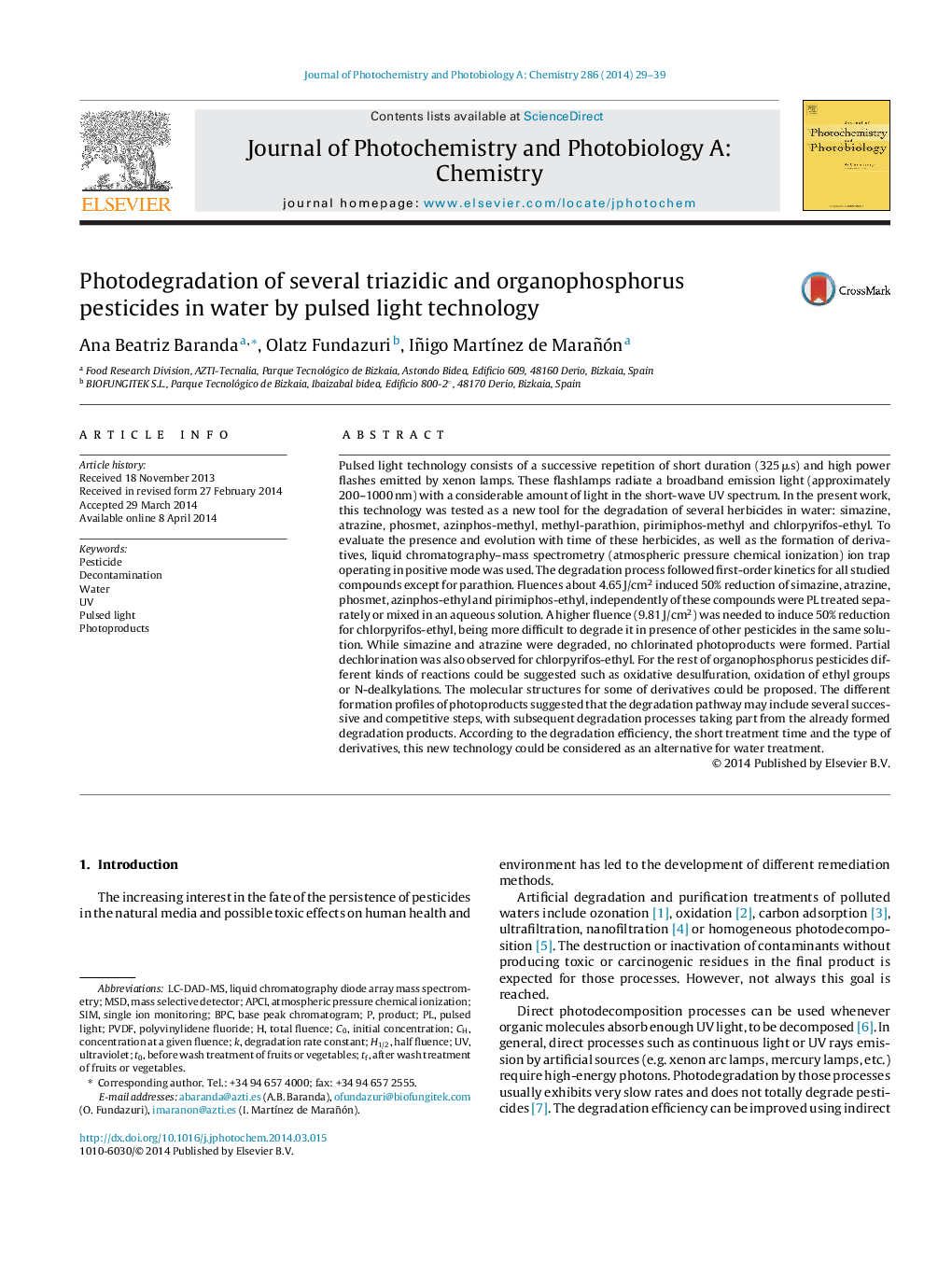| کد مقاله | کد نشریه | سال انتشار | مقاله انگلیسی | نسخه تمام متن |
|---|---|---|---|---|
| 26239 | 43942 | 2014 | 11 صفحه PDF | دانلود رایگان |
• Water containing seven pesticides was decontaminated by pulsed light technology.
• The effectiveness of the process and the type of derivatives were studied.
• The degradation of the most studied compounds occurred in a short period of time.
• Pesticide degradation by pulsed light followed first-order kinetics.
• The degradation pathway included several successive and competitive steps.
Pulsed light technology consists of a successive repetition of short duration (325 μs) and high power flashes emitted by xenon lamps. These flashlamps radiate a broadband emission light (approximately 200–1000 nm) with a considerable amount of light in the short-wave UV spectrum. In the present work, this technology was tested as a new tool for the degradation of several herbicides in water: simazine, atrazine, phosmet, azinphos-methyl, methyl-parathion, pirimiphos-methyl and chlorpyrifos-ethyl. To evaluate the presence and evolution with time of these herbicides, as well as the formation of derivatives, liquid chromatography–mass spectrometry (atmospheric pressure chemical ionization) ion trap operating in positive mode was used. The degradation process followed first-order kinetics for all studied compounds except for parathion. Fluences about 4.65 J/cm2 induced 50% reduction of simazine, atrazine, phosmet, azinphos-ethyl and pirimiphos-ethyl, independently of these compounds were PL treated separately or mixed in an aqueous solution. A higher fluence (9.81 J/cm2) was needed to induce 50% reduction for chlorpyrifos-ethyl, being more difficult to degrade it in presence of other pesticides in the same solution. While simazine and atrazine were degraded, no chlorinated photoproducts were formed. Partial dechlorination was also observed for chlorpyrifos-ethyl. For the rest of organophosphorus pesticides different kinds of reactions could be suggested such as oxidative desulfuration, oxidation of ethyl groups or N-dealkylations. The molecular structures for some of derivatives could be proposed. The different formation profiles of photoproducts suggested that the degradation pathway may include several successive and competitive steps, with subsequent degradation processes taking part from the already formed degradation products. According to the degradation efficiency, the short treatment time and the type of derivatives, this new technology could be considered as an alternative for water treatment.
Figure optionsDownload as PowerPoint slide
Journal: Journal of Photochemistry and Photobiology A: Chemistry - Volume 286, 15 July 2014, Pages 29–39
